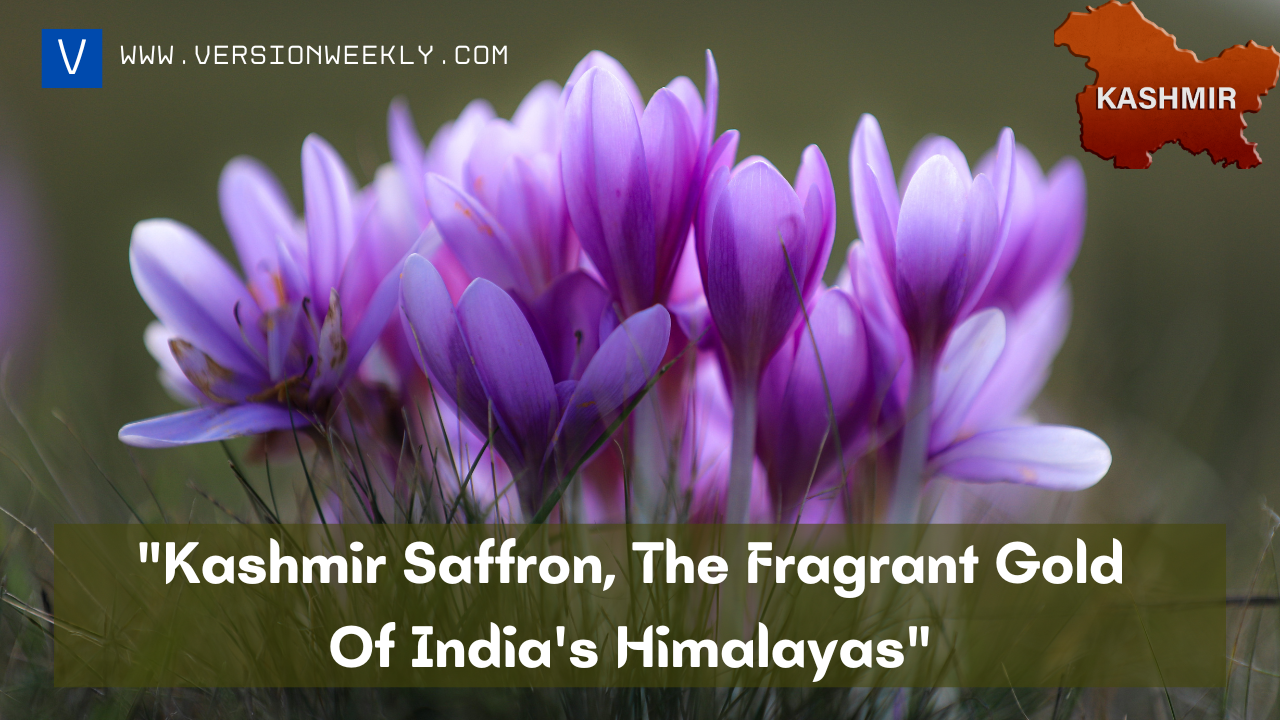“Kashmir Saffron: Unveiling The Secrets Of The Red Gold Of India’s Himalayas”: The Kashmir saffron story is a tale of aromatic spice that has been cultivated in the picturesque region of Kashmir, located in the northern part of India. Saffron, often referred to as “red gold,” is one of the most expensive spices in the world, known for its distinct flavor, fragrance, and vibrant crimson color. The history of saffron cultivation in Kashmir dates back centuries, and it continues to be a significant part of the region’s cultural and economic heritage.
Red Gold Of Himalayas, Kashmir Saffron: History
The cultivation of saffron in Kashmir can be traced back to the 11th century when it was introduced to the region by Persian traders. The ideal climatic conditions, with cold winters and moderate rainfall, combined with the fertile soil of the Kashmir Valley, made it a perfect location for saffron cultivation. Over time, saffron became an integral part of Kashmiri cuisine, particularly in dishes like biryani and various sweets.
| Cultivation Process |
Kashmiri saffron is primarily grown in the Pampore region, located just south of Srinagar, the capital of Jammu and Kashmir. The cultivation process is labor-intensive and time-consuming, which contributes to its high cost. Here are the key steps involved in growing Kashmir saffron:
- Preparation of Land: Saffron bulbs, known as corms, are planted in well-prepared fields during the late summer months. These corms are carefully spaced and planted by hand.
- Flowering: Saffron flowers, with delicate lilac petals and bright red stigmas, bloom for a brief period in late autumn, usually in October and November. During this time, the fields come alive with vibrant colors.
- Harvesting: The harvesting of saffron is a delicate process. Farmers rise before dawn to carefully pluck the delicate stigmas from the flowers. Each flower yields only three stigmas, which are the valuable saffron threads.
- Drying: The freshly harvested saffron threads are then dried, traditionally in the sun, to preserve their flavor and aroma.
| Challenges And Controversies |
Despite its illustrious history, Kashmiri saffron faces various challenges and controversies. One of the primary issues is the declining yield due to changing weather patterns and the encroachment of urbanization on saffron fields. Additionally, the saffron industry in Kashmir has faced competition from cheaper Iranian saffron, leading to concerns about the authenticity and quality of saffron sold in the market.
Efforts have been made to protect and promote Kashmir saffron. In recent years, the government has implemented schemes to support saffron farmers, improve cultivation practices, and enhance product quality. Moreover, various certification mechanisms have been introduced to differentiate authentic Kashmiri saffron from imitations.
| Cultural Significance |
Kashmiri saffron is not just a spice; it is an integral part of the region’s culture and tradition. It is used in a wide range of dishes, from aromatic rice preparations to special sweets served during festivals and weddings. Beyond its culinary uses, saffron is also used in traditional medicine and in the production of perfumes and cosmetics.
There are many questions what is the price of 1 kg Kashmiri saffron? The price of 1 kg of Kashmiri saffron ranges from $2,000 to $3,000, depending on the quality and grade of the saffron. Kashmiri saffron is one of the most expensive spices in the world due to its delicate nature, labor-intensive production, and limited growing area.
However, Kashmiri saffron is highly prized for its unique flavor, aroma, and color. It is a popular ingredient in many Indian and Middle Eastern dishes, as well as in traditional medicine and the perfume industry.
If you are interested in buying Kashmiri saffron, it is important to purchase it from a reputable source to ensure that you are getting genuine, high-quality saffron.
Faq’s On Kashmir Saffron |
1. What Makes Kashmiri Saffron Unique?
Kashmir saffron is renowned for its superior quality and distinct flavor. Its uniqueness is attributed to the specific climate and soil conditions in the Kashmir Valley, which enhance its aroma and color.
2. Why is Kashmiri Saffron So Expensive?
Kashmir saffron is labor-intensive to cultivate and harvest, as each flower yields only a few precious saffron threads. Additionally, its scarcity and high demand contribute to its premium price.
3. How is Kashmir Saffron Used in Cuisine?
Kashmiri saffron is a key ingredient in various traditional dishes, such as biryani, pulao, and desserts like phirni and kheer. It imparts a rich, aromatic flavor and a vibrant color to these recipes.
4. What Challenges Does the Kashmir Saffron Industry Face?
The saffron industry in Kashmir faces challenges such as declining yields due to changing weather patterns, urbanization encroaching on saffron fields, and competition from cheaper Iranian saffron. Ensuring authenticity and quality is also a concern.
5. Are There Efforts to Protect and Promote Kashmir Saffron?
Yes, the government of Jammu and Kashmir has initiated schemes to support saffron farmers, improve cultivation practices, and establish certification mechanisms to safeguard the authenticity of Kashmiri saffron. These efforts aim to preserve and promote this valuable spice.
Conclusion
The Kashmir saffron story is a testament to the enduring allure of a spice that has thrived in the stunning landscapes of Kashmir for centuries. Despite the challenges it faces, the cultivation of saffron continues to be a source of pride and livelihood for the people of Kashmir, and its rich history and cultural significance continue to shine brightly in this picturesque region.
| Must Read: The Golden Benefits Of SAFFRON |
